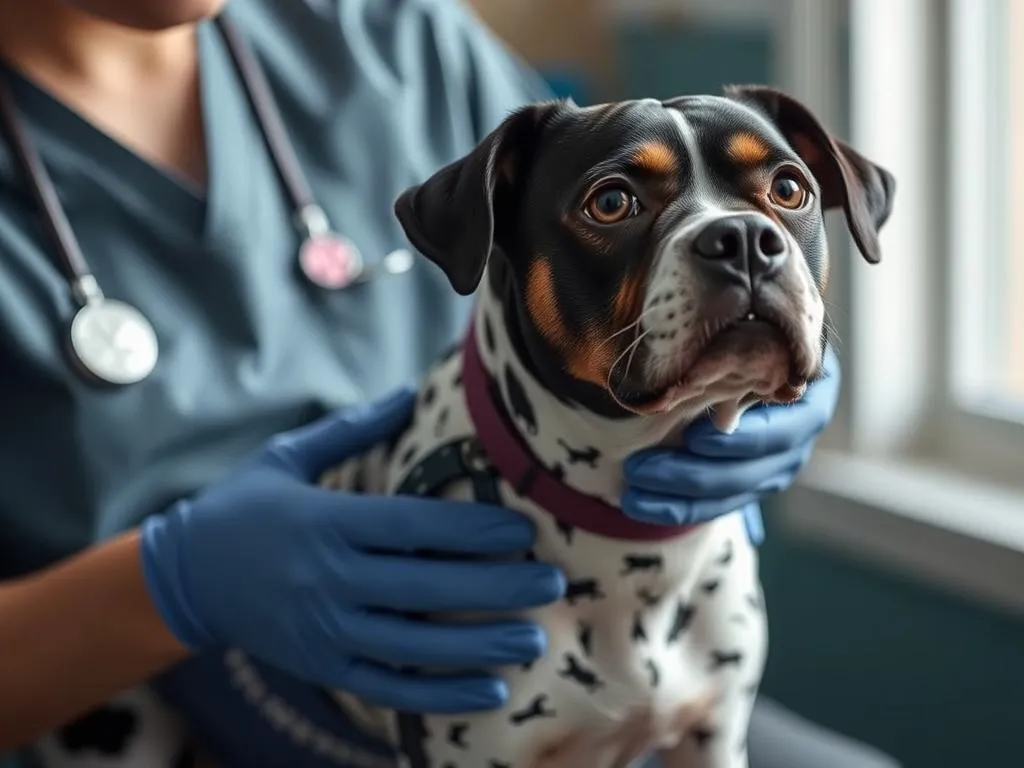
Introduction
Canine anxiety can be a distressing issue for both dogs and their owners. Defined as a state of excessive worry or fear, anxiety in dogs manifests in various ways, including trembling, pacing, excessive barking, and even destructive behaviors. Recognizing the signs early on is crucial for effective management and support. Common symptoms include:
- Pacing or restlessness
- Excessive barking or whining
- Destructive behavior
- Avoidance of certain situations or people
- Physical signs such as trembling or panting
As pet owners seek solutions for their anxious companions, one method gaining attention is the use of body wraps. This article explores the effectiveness of body wraps for dogs with anxiety, providing insights from a veterinary perspective.
Understanding Canine Anxiety
Types of Anxiety in Dogs
Canine anxiety can take several forms, each with unique triggers and symptoms. Understanding these types helps in identifying the most effective treatments.
-
Separation Anxiety: This occurs when dogs become excessively distressed when left alone, often leading to destructive behaviors and vocalizations.
-
Noise Phobias: Many dogs experience fear during thunderstorms or fireworks, exhibiting panic-like symptoms.
-
Generalized Anxiety Disorder: Some dogs display chronic anxiety without a clear trigger, leading to persistent worry and stress.
-
Specific Phobias: These include fears of specific objects or situations, such as strangers, certain animals, or specific environments.
Causes of Anxiety in Dogs
Numerous factors contribute to anxiety in dogs, including:
-
Genetics and Breed Predisposition: Certain breeds, such as Border Collies and German Shepherds, may be more prone to anxiety.
-
Past Trauma: Dogs that have experienced abuse or neglect may suffer from anxiety due to their past.
-
Lack of Socialization: Insufficient exposure to different people, animals, and environments can lead to fear and anxiety.
-
Changes in Environment or Routine: Moving to a new home or changes in family dynamics can trigger anxiety in dogs.
Consequences of Untreated Anxiety
Failing to address anxiety in dogs can lead to significant consequences, including:
-
Behavioral Issues: Untreated anxiety can result in aggression, excessive barking, and other problematic behaviors.
-
Physical Health Problems: Chronic stress can lead to various health issues, including digestive problems and a weakened immune system.
-
Impact on the Human-Animal Bond: Anxiety can strain the relationship between dogs and their owners, leading to frustration and misunderstandings.
Overview of Body Wraps
What Are Body Wraps?
Body wraps are specially designed garments that apply gentle pressure to a dog’s body, similar to swaddling an infant. Their primary purpose is to provide a calming effect, helping to alleviate anxiety symptoms. Popular products include the Thundershirt and Anxiety Wrap, both of which are designed to fit snugly around a dog’s torso.
How Body Wraps Work
The mechanism of action behind body wraps lies in the application of pressure. This pressure activates pressure points, similar to the principles of acupressure, promoting relaxation and reducing anxiety. The calming effect is believed to stem from the release of calming hormones and neurotransmitters in response to the gentle pressure.
Materials and Design Considerations
Body wraps are typically made from soft, stretchy materials that provide comfort while ensuring a snug fit. Key design features include:
-
Adjustable Straps: Allow for a customizable fit to accommodate different body shapes.
-
Breathable Fabrics: Ensure comfort, particularly during prolonged use.
-
Easy to Clean: Many wraps are machine washable, making maintenance simple.
Vet’s Perspective on Body Wraps for Anxiety
Clinical Evidence and Studies
The effectiveness of body wraps for dogs with anxiety has been the subject of several studies. Research indicates that many dogs exhibit reduced anxiety levels when wearing these wraps, particularly during stressful events like thunderstorms or fireworks. However, while body wraps can be beneficial, they are not a cure-all and should be considered part of a broader treatment plan.
When to Consider Body Wraps
Body wraps may be particularly useful in specific situations, such as:
-
During Thunderstorms or Fireworks: Many dogs display heightened anxiety during these events, and wraps can provide immediate relief.
-
When Introducing New Experiences: Body wraps can help ease anxiety during veterinary visits or travel.
-
As a Supplement to Other Treatments: They can be used alongside behavioral therapy or medication for a comprehensive approach.
Potential Limitations and Drawbacks
While body wraps can be beneficial, they are not a one-size-fits-all solution. Potential limitations include:
-
Not Effective for All Dogs: Some dogs may not respond positively to body wraps, and their effectiveness can vary based on individual temperament.
-
Misconceptions: Owners may mistakenly believe that body wraps can completely eliminate anxiety, which is not the case. They are best used as part of a holistic treatment plan.
Expert Recommendations
How to Properly Use Body Wraps
To maximize the benefits of body wraps, follow these steps:
-
Choose the Right Size: Ensure the wrap fits snugly but comfortably around your dog’s body without restricting movement.
-
Put It On Calmly: Introduce the wrap in a relaxed environment. Allow your dog to sniff it and get accustomed to its presence before putting it on.
-
Monitor Fit: Adjust the wrap as needed to ensure it remains snug without causing discomfort.
-
Start Slowly: Initially, have your dog wear the wrap for short periods while engaging in calming activities, gradually increasing the duration.
Monitoring Your Dog’s Response
It’s essential to observe your dog’s behavior while using a body wrap:
-
Signs of Improvement: Look for decreased anxiety symptoms, such as reduced pacing or whining.
-
When to Seek Further Veterinary Advice: If your dog shows no improvement or experiences increased anxiety, consult your veterinarian for alternative treatment options.
Alternative Treatments for Canine Anxiety
While body wraps can be effective, other treatment options may also be considered:
-
Behavioral Therapy: Techniques such as desensitization and counter-conditioning can be effective in managing anxiety.
-
Medication and Herbal Remedies: In some cases, veterinarians may recommend anxiety medications or natural supplements to help manage symptoms.
-
Environmental Enrichment Strategies: Providing mental stimulation through toys, puzzles, and interactive play can help alleviate boredom and anxiety.
Conclusion
In summary, body wraps can be a helpful tool for managing canine anxiety, offering a calming effect for many dogs. However, they should not be viewed as a standalone solution. A comprehensive approach that includes behavioral strategies, environmental enrichment, and potential medical interventions is crucial for effectively addressing anxiety in dogs.
Before implementing any treatment plan, it’s vital to consult your veterinarian for personalized advice tailored to your dog’s specific needs. Sharing experiences and insights into managing canine anxiety can also foster a supportive community among pet owners.
FAQs
Are body wraps safe for all dogs?
Body wraps are generally safe for most dogs, but it’s essential to ensure the wrap fits properly and does not cause discomfort. Consult your veterinarian if your dog has specific health concerns.
How long should a dog wear a body wrap?
Dogs can wear body wraps for several hours, particularly during stressful events. However, it’s best to start with short periods and gradually increase the duration based on your dog’s comfort level.
Can body wraps replace medication for anxious dogs?
While body wraps can help alleviate anxiety symptoms, they should not replace medication if prescribed by a veterinarian. They can be used as a complementary treatment.
What are other calming techniques to consider?
Other calming techniques include creating a safe space, using calming pheromones, engaging in regular exercise, and providing interactive toys to keep your dog mentally stimulated.









